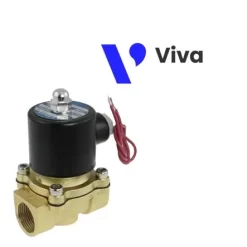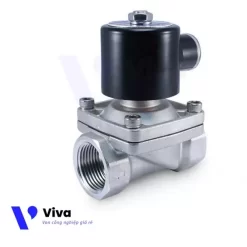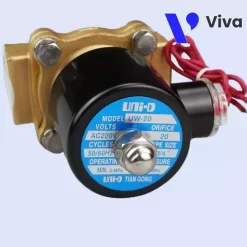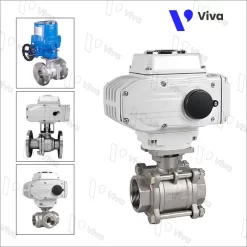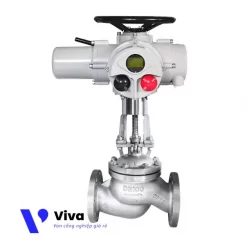What is electric current?
Electricity has become an indispensable part of modern life. Electric current is widely used in electronic devices, machinery, industries, and other sectors. Electricity is transmitted through conductors via electric current, a fundamental and important concept in the field of electricity. To have a better understanding of electric current, one needs to grasp the definition and units of measurement for electric current. This article will address these questions and provide you with basic knowledge about electric current, from its definition and types to measurement and calculations.
What is Electric Current?
What is electric current? Electric current is the movement of electrons in a conductor, such as a copper wire. Electric current is measured in Amperes (A) and is typically symbolized as “I”. Electric current can be alternating current (AC) or direct current (DC), depending on the direction of electron movement.
AC is commonly used in power grid systems, where the current changes direction and frequency continuously. On the other hand, DC is commonly used in electronic applications such as phones, computers, and other electronic devices.
Electric current can be controlled by electronic components such as resistors, capacitors, and inductors. Additionally, electric current can be used to generate magnetic fields through magnets and coils.
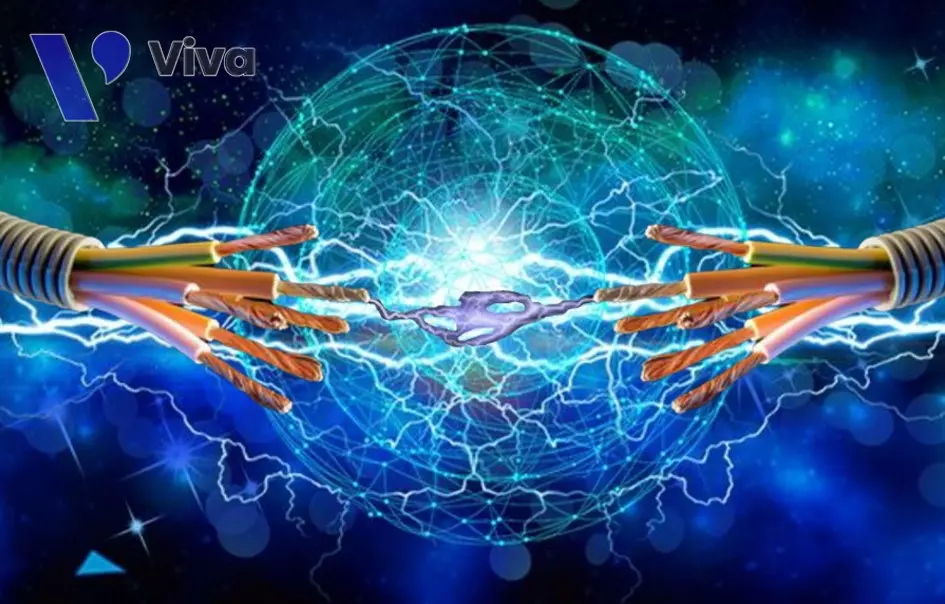
Historical Development of Electric Current
The development of electric current started in the 18th century when Italian physicist Luigi Galvani discovered the phenomenon of electrical stimulation while conducting experiments with animals. This phenomenon opened the door for the study of electric current.
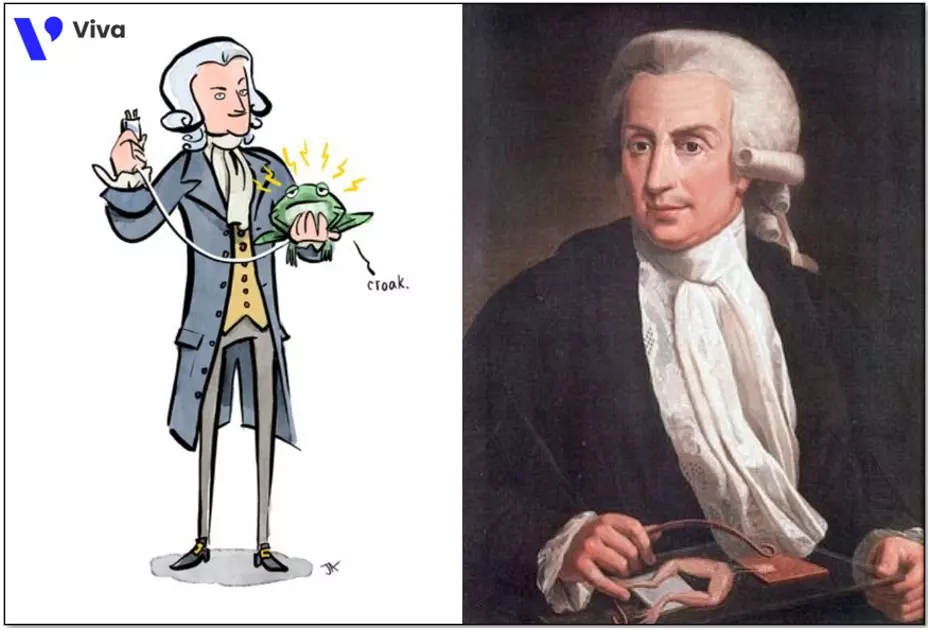
In the early 1800s, Italian physicist Alessandro Volta invented the first electrochemical cell, known as the Voltaic pile, by using alternating zinc and copper plates to create a direct current source. Later on, other scientists such as André-Marie Ampère, Georg Simon Ohm, and Michael Faraday introduced important concepts and laws related to electric current.
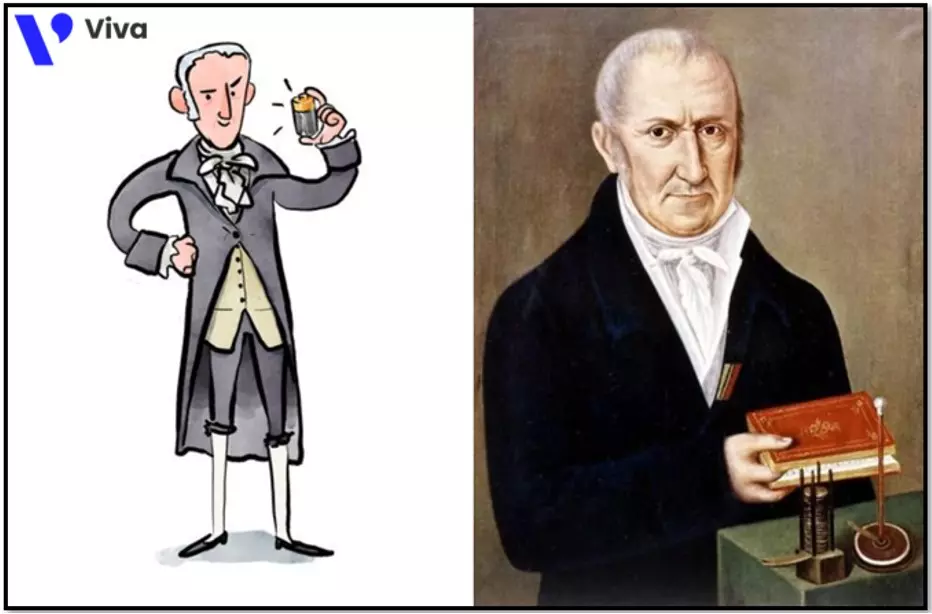
By the late 19th century, Thomas Edison invented the electric light bulb and developed methods for producing and distributing electrical power to the public.

At the same time, Nikola Tesla introduced the concept of alternating current and invented the alternating current generator. These inventions marked a significant breakthrough in the history of electrical development.
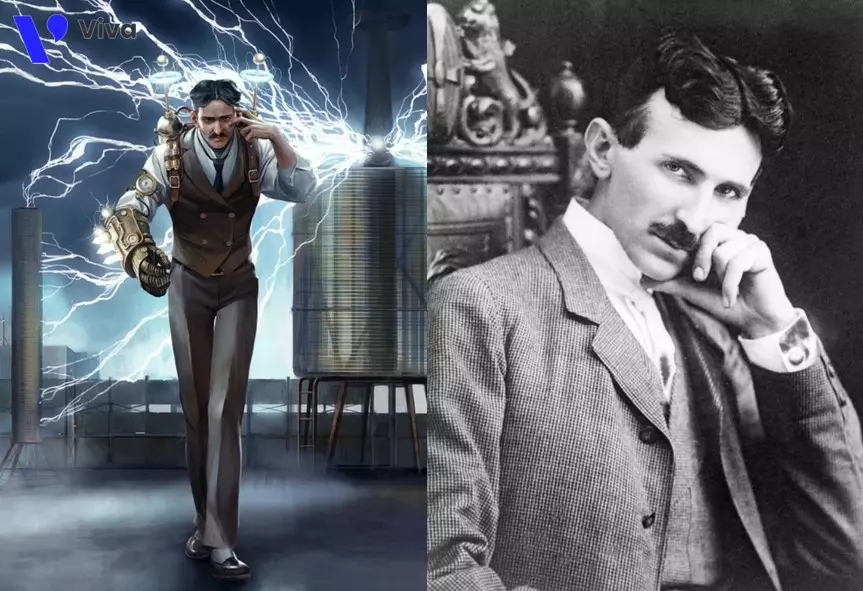
In the 20th century, the use of electricity became more widespread in daily life and industrial production. Scientists and engineers continued to develop new technologies to increase efficiency, reduce costs, and improve safety and convenience for users. Notable achievements include the use of solar power, wind power, and hydroelectric power to generate electricity, as well as the development of electronic devices such as microchips, computers, and mobile phones.
From the earliest inventions by Volta to the present day, electric current has played a crucial role in human life and development.
Direction of Electric Current
The direction of electric current refers to the movement of electrons in an electric circuit. There are two common directions of electric current: direct current (DC) and alternating current (AC).
- Direct current (DC) is a type of current in which electrons flow in only one direction in the circuit. The voltage of a DC power source remains constant over time and is determined by the positive and negative terminals of the source. DC current is commonly used in applications such as flashlight batteries, electrical outlets, and small electronic devices.
- Alternating current (AC) is a type of current in which electrons change direction periodically. The voltage of an AC power source varies over time, creating a sinusoidal or triangular voltage waveform. The frequency of AC voltage is typically 50 or 60 Hz, depending on the regulations of each country. AC current is commonly used in applications such as industrial machinery, air conditioning, household appliances, and power transmission systems.
Here is the translation of the given text into English, with the HTML code preserved:
Some differences between DC and AC current:
- DC current has a fixed positive and negative direction, while AC current continuously changes direction in a cycle.
- DC current has a frequency range of 0, while AC current has a frequency range starting from 50Hz or 60Hz.
- The voltage of DC current remains constant, while the voltage of AC current changes over time and frequency.
- DC current is easily controllable and used in small-scale applications, while AC current is commonly used in industrial applications and large-scale power transmission systems.

What is current intensity?
Current intensity is an important parameter in the field of electricity, measuring the strength of an electric current. Current intensity is defined as the ratio of the amount of electric charge moving through a point in a certain period of time, usually measured in Ampere (A).
In an electric circuit, current intensity is determined by the voltage source connected to the circuit input and the impedance of the current path. The greater the current intensity, the larger the amount of electric charge in motion, and vice versa.
Current intensity also depends on factors such as the cross-sectional area of the conductor, the conductivity of the conducting material, and the temperature of the surrounding environment.
The formula to calculate current intensity is determined by the ratio of the amount of electric charge moving through a point in a certain period of time, usually measured in Ampere (A). The precise formula to calculate current intensity is:
I = Q / t
Where:
- I represents current intensity (unit: Ampere – A)
- Q represents the amount of electric charge moving through a point in time t (unit: Coulomb – C)
- t represents the time in which the amount of electric charge Q moves through a point (unit: second – s)
This formula allows for the calculation of current intensity for any type of electric circuit where the amount of electric charge in motion can be measured.

What is Voltage?
Voltage is an important concept in the field of electricity. It measures the potential of an electric source to generate a current flowing through an electrical circuit. Voltage is defined as the electrical potential difference between two points in a circuit and is measured in units of volts (V).
According to the definition, when two points in a circuit have different voltages, charge will move from the point with higher voltage to the point with lower voltage. This movement creates an electric force (or electromotive force) between those points, causing a current to flow through the electrical circuit.
Voltage also depends on factors such as the magnitude of the power source, the connection of the power source to the circuit, the impedance of the circuit, and the temperature of the surrounding environment.
Measuring voltage is crucial in electrical applications, such as operating electrical devices, measuring circuit performance, and ensuring safety in industrial environments.
The formula to calculate voltage is determined by the potential difference between two points in a circuit and is measured in units of volts (V). The precise formula for voltage calculation is:
V = E2 – E1
Where:
- V is the voltage between two points in the circuit (unit: volts – V)
- E2 and E1 are the electrical potentials at those points (unit: volts – V)

Properties of Electric Current
Electric current is an important physical phenomenon widely used in various engineering applications. Here are some fundamental properties of electric current:
- Conductivity: Electric current exhibits conductivity, meaning it has the ability to conduct electrons and ions in a conducting medium.
- Thermal properties: Electric current can generate heat when passing through conductive materials, especially when the material has high resistance.
- Magnetic properties: Electric current creates a magnetic field around a conductor, and the strength of this magnetic field increases with the current intensity.
- Chemical properties: Electric current can affect chemical reactions in an electrolytic environment.
- Electromagnetic properties: Electric current generates an electric field and a magnetic field, and it can interact with electrons and ions in an electric medium.
- Momentum properties: Electric current has momentum and can generate a force to perform work, such as rotating an electric motor.
These properties together contribute to the diverse and significant nature of electric current in various technical and scientific fields.
Basic formulas for electric current
Basic formulas for electric current are important formulas for calculating and measuring electric current in an electrical circuit. Below are the basic formulas related to electric current:
Ohm’s Law
Ohm’s Law is an important law in electrical physics that describes the relationship between voltage, electric current, and resistance of a conductor. This law is named after the German physicist Georg Simon Ohm.
According to Ohm’s Law, the voltage V (measured in volts) across any conductor is directly proportional to the electric current I (measured in amperes) flowing through that conductor and inversely proportional to the resistance R (measured in ohms) of the conductor:
I = V/R
Where:
- I is the electric current (measured in amperes),
- V is the voltage (measured in volts),
- R is the resistance (measured in ohms).
Ohm’s Law allows for calculating the value of voltage, electric current, or resistance if the values of the other two are known. It also helps in understanding the characteristics of conductors and how they interact with electric current. Ohm’s Law is widely applied in electrical applications, including circuit design and electrical measurements.
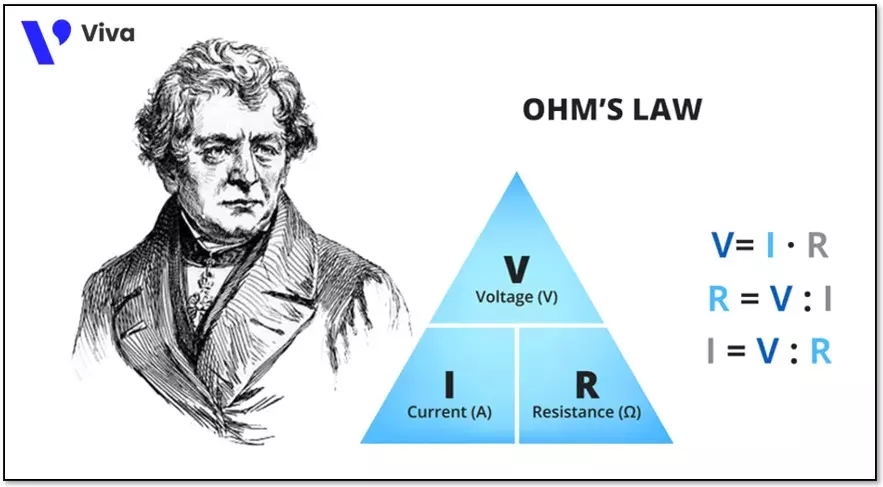
Electric Power of Current
Electric power of a circuit is the electrical energy consumed by that circuit in a unit of time.
Formula for calculating electric power:
P = VI
Where:
- P is the power (measured in watts),
- V is the voltage (measured in volts),
- I is the electric current (measured in amperes).
This formula only calculates the power of a simple electrical circuit with constant resistance. In the case of more complex electrical circuits, the power can be calculated by summing up the powers of individual components of the circuit or by using more complex formulas involving phase calculations between voltage and electric current.
Additionally, the power of electric current can also be determined based on measurement charts, such as power measurement charts and power factor charts of an electrical circuit. These charts allow for measuring the efficiency of the electrical circuit and determining important parameters such as power loss and power factor of the circuit.
Electric Energy of Current
Electric energy (also known as electrical energy) is the amount of energy consumed by an electrical circuit in a specific period of time. The formula for calculating electric energy is represented by the following formula:
Formula for calculating electric energy:
E = Pt
Where:
- E is the electric energy (measured in joules),
- P is the power (measured in watts),
- t is the time (measured in seconds).
The formula above only applies to simple electrical circuits with constant power over time t. In more complex electrical circuits, the calculation of electrical energy can be obtained by calculating the sum of the energy consumed by individual components of the circuit.
Electrical energy is one of the important quantities in electrical engineering because it allows the calculation of the amount of electrical energy consumed by a circuit within a certain period of time. Electrical energy is also used to calculate the monetary value of electricity that a consumer has to pay.
Kirchhoff’s Laws
Kirchhoff’s Laws are important principles in the theory of electrical circuits. These laws consist of two principles: Kirchhoff’s Voltage Law and Kirchhoff’s Current Law.
Kirchhoff’s Voltage Law
Kirchhoff’s Voltage Law (also known as the law of voltage division) states that the sum of voltages in a closed circuit (or a circuit block) is equal to the sum of individual voltages across each component of the closed circuit. It is represented by the following formula:
ΣV = 0
- Where ΣV is the sum of voltages in the closed circuit, and it must be equal to 0 if there are no external power sources connected to the circuit.
Kirchhoff’s Current Law
Kirchhoff’s Current Law (also known as the law of current division) states that the sum of currents flowing into a node is equal to the sum of currents flowing out of that node. It is represented by the following formula:
ΣI = 0
- Where ΣI is the sum of currents at a node in the electrical circuit, and it must be equal to 0 if there are no external current sources connected to that node.
Kirchhoff’s Laws are important tools in the design and analysis of complex electrical circuits. They help determine the voltage and current values across components of complex electrical circuits and serve as a basis for calculating other parameters such as resistance, capacitance, and inductance.
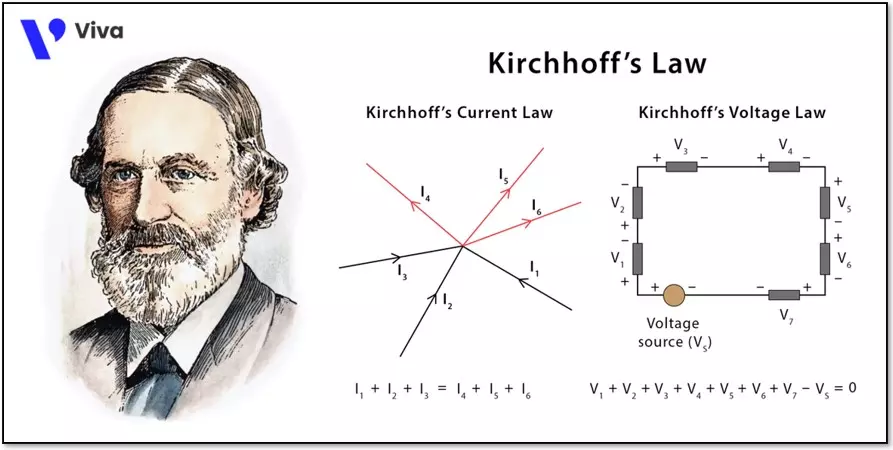
The Difference between Electric Current and Electric Charge
Electric current and electric charge are two fundamental concepts in the field of electrical engineering. Although related, they have significant differences.
Electric charge is a physical property of particles carrying an electric charge. There are two main types of electric charge: positive charge and negative charge, measured in Coulombs (C). Charged particles include electrons, protons, ions, and they can move within a substance through exchange or motion. Each charged particle carries a specific amount of electric charge.
Electric current is the movement of charged particles in a conductor. It is measured in Amperes (A) and defined as the amount of electric charge moving through a point in a certain period of time. Electric current is a parameter representing the motion of electric charge in a conductor.
In an electrical circuit, electric current is usually generated by the movement of electrons. When a voltage source is connected to a conductor, the electrons in the conductor begin to move and create an electric current. However, electric charge cannot generate electric current; it only participates in the motion of the electric current.
Electric charge is a property of charged particles, while electric current is the movement of charged particles in a conductor. Understanding the difference between these two concepts is extremely important for effective application in the design, operation, and maintenance of electrical devices.
Some Effects of Electric Current
Electric current has many important effects in various fields. Here are some effects of electric current:
- Heat generation: When an electric current flows through a resistive wire, it generates heat, heating up that section of the wire. This effect is widely used in devices such as electric stoves, ovens, dryers, etc.
- Light generation: Electric current can produce light through lighting devices such as fluorescent lamps, LED lights, and incandescent bulbs.
- Magnetic field generation: When an electric current flows through a conductor, it generates a magnetic field around the conductor. This effect is used in devices such as motors, transformers, and electronic devices.
- Electromagnetic radiation: Electric current can emit electromagnetic radiation through devices such as antennas, transmitters, and communication devices.
- Cell stimulation: Electric current can be used to stimulate cells in the human body. This effect is used in medical treatment methods such as electrocautery, defibrillation, and other techniques.
- Motion of motors: Electric current can be used to provide energy for electric motors and other electronic devices.
These are some effects of electric current, and there are many other effects as well.
Methods for Measuring Electric Current
Here are some methods for measuring electric current:
- Using an ammeter: This is the most common and accurate method for measuring electric current. An ammeter is connected to the electrical circuit to measure the current flowing through it. In AC (alternating current) circuits, the ammeter must be connected correctly to measure the correct values of voltage and current in the circuit.
- Using a clamp meter: A clamp meter is used to measure electric current in AC circuits. The clamp is placed around the conductor of the circuit to measure the current flowing through it. This is a non-contact method of measuring electric current, allowing for quick and easy current measurements.
- Using an ohmmeter: An ohmmeter can be used to measure resistance in the wires of an electrical circuit. By measuring the resistance in the circuit, you can calculate the value of the current flowing in the circuit.
- Using a current sensor: A current sensor is a non-contact device used to measure electric current in both AC and DC circuits. The sensor is placed around the conductor of the circuit to measure the current flowing through it.
The methods for measuring electric current mentioned above each have their own advantages and limitations. The selection of a suitable method depends on the type of circuit being measured, the value of the current being measured, and the purpose of the current measurement.
Some types of industrial valves using electrical energy
Solenoid valves
Solenoid valves are controlled by electrical energy and used in various industrial applications, from water to chemicals and gases. Solenoid valves operate based on the principles of magnetism and electromagnetic induction. When current is controlled through a coil wrapped around the outside of the valve, the magnet is activated, pulling the valve plunger and blocking the flow.
Electrically actuated control valves
Similar to solenoid valves, electrically actuated valves are also controlled by electrical energy but use a motor through a gear conversion system to open/close the valve instead of using a magnetic field. These valves include butterfly valves, ball valves, gate valves, globe valves, and diaphragm valves. They are commonly used to control the flow of water and other fluids.
Electrical hazards
Electric current is a necessary source of energy for human life and industrial production. However, if not used correctly, electric current can cause harm to human health and life. Here are some hazards associated with electric current:
- Electric shock injuries: Electric shock occurs when the body comes into direct contact with electricity. Electric shock can cause injuries to the body, such as damaging tissues and organs or causing burns on the skin.
- Life-threatening dangers: When electric current flows through the body, it can have serious consequences such as loss of control, heart problems, and even death.
- Effects on the nervous system: Electric current can affect the nervous system of humans and animals, causing symptoms such as headaches, nausea, and abdominal pain.
- Fire and explosion hazards: Electric current can cause fires and explosions in improperly designed electrical circuits or electrical devices.
- Environmental impact: Improperly designed electrical devices and circuits can generate hazardous emissions and cause environmental pollution.
Therefore, it is important to be cautious and ensure safety when working with electric current, especially in large industrial circuits or when using electrical devices at home.
In summary, understanding electric current is a fundamental and important requirement for those working in the electrical field, as well as in other areas related to electrical usage. This article provides an overview of electric current and answers questions about current measurement units, types of electric current, and calculations. Hopefully, the information on the website will help you have a better understanding of electric current and use electricity more efficiently in your life and work.

